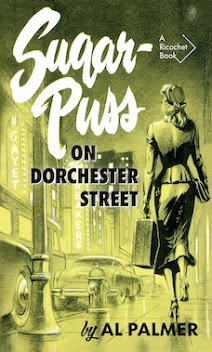Executed 250 years ago today, Marie-Josephte Corriveau – la Corriveau – was a survivor. Just thirty at the time of her death, she'd long outlived her ten brothers and sisters, all of whom died in childhood. Marie-Josephte also survived her first husband, Charles Bouchard, the father of her three children. Widowed at twenty-seven, in 1761 she married Louis Étienne Dodier who, like Charles,was a farmer from St.Vallier on the St. Lawrence, just south of Ile d'Orléans. A little over eighteen months later, poor Louis was found dead in the barn, his head nearly caved in. The horse was to blame... or so it was thought at first. Then the rumours began to circulate.
In the spring of 1763, Marie-Josephte and her father, Joseph, were brought before a military tribunal. Joseph was found guilty of the murder and was sentenced to death. Marie-Josephte would've been flogged and branded as an accessory had it not been for her father's confession to a priest. Seems she'd been more than willing to see dear old dad swing for a crime she had in fact committed. At a second trial she confessed.
After Marie-Josephte was hanged, her body was placed in a gibbet – quite possibly the one pictured above! She was then transported across the St Lawrence and was suspended for five weeks from a post at the intersection of what are today Rue St-Joseph and Boulevard de l'Entente in Lévis.
Now, watch those property values soar.
An Anglo Quebecer, I first read of la Corriveau as a teenager in Philippe-Joseph Aubert de Gaspé's Les Anciens Canadiens. Her presence in English-language Canadian literature is negligible, though she did get off to an early start; William Kirby featured Marie-Josephte in his 1877 novel The Golden Dog. Here la Corriveau is a poisoner for hire, a direct descendant of Catherine Deshayes, the 17th-century serial killer known as la Voisine.
 |
| The Golden Dog: A Romance in the Days of Louis Quinze in Quebec William Kirby Toronto: Musson/Montreal: Montreal News Co, n.d. |
The 20th-century brought more novels, a ballet, and plays by Victor-Lévy Beaulieu, Anne Hébert and Guy Cloutier.. She lives on in this century:
There's even something for the kiddies:
Were I not so far away, I'd make the effort to attend this evening's Marie-Josephte Corriveau Commemoration in Quebec City.
As it is, I'll be raising a glass, if only in recognition of the contribution she made – unwittingly – to the country's literature.
A black oatmeal stout with ruby highlights, la Corriveau seems the obvious choice, but like the lady herself, it's rarely seen in Upper Canada.
A bonus:
Just look at what the sorry souls at VDM Publishing have on offer:














































